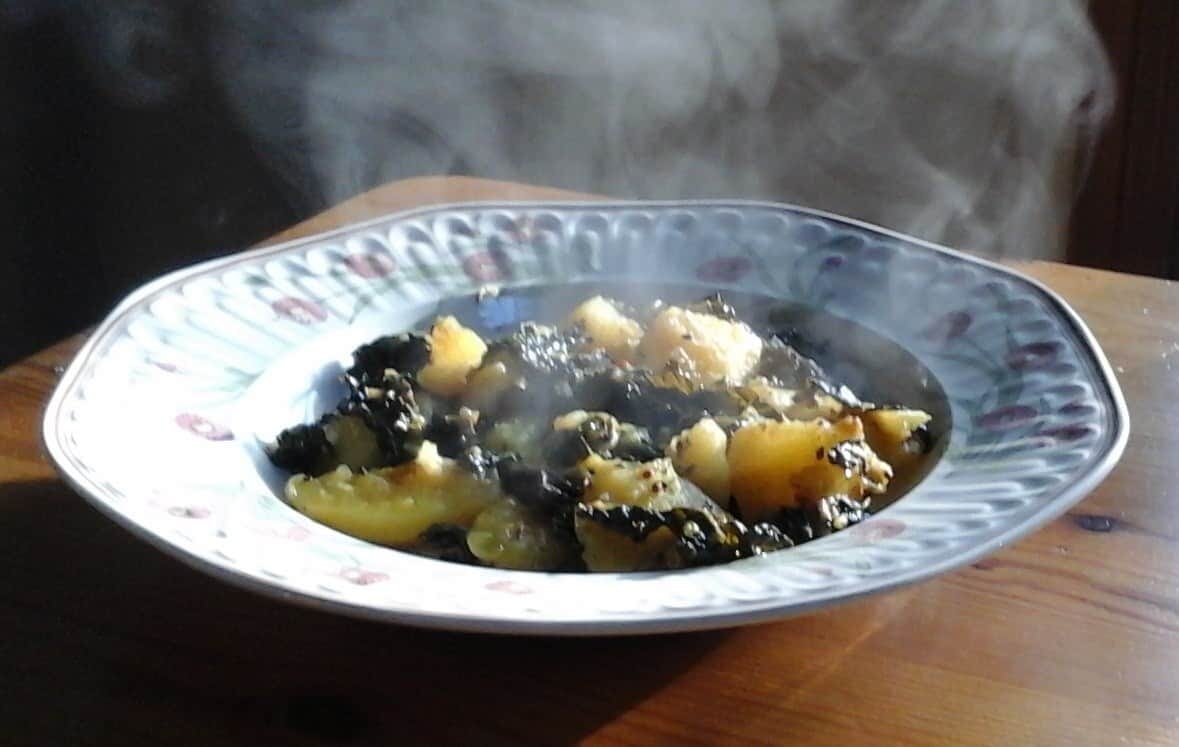All hail kale!
From the garden
Annie Reeve, Woodend Permaculture Garden
There are many forms of kale; the nutritionally famous Cavalo Nero, Russian Kale and Curly Kale to name but a few common forms.
In our house we especially love Russian Kale (pictured); it is nutty and sweet, it is easy to clean as the leaves are quite flat and it is very productive all Winter-long (sow in Dec). In Spring it becomes an amazing sprouting broccoli alternative, with wonderful tender leaves. Russian kale is a fabulously attractive structural plant and when you fail to keep up with it as a broccoli it will flower beautifully attracting many insects into the garden. If you ignore it long enough it will self-sow abundantly.
Kale, like all the large brassicas, should be sown quite early for a good harvest. We sow in seed trays and pot-up once before transplanting under shade for approximately one week to reduce transplant shock. Kale responds well to our climate growing well and holding well into Spring, it does attract the cabbage moth butterfly but we can always find enough to eat.
Kale shares similar flavours to the rest of the cabbage family and really shines with flavours of lemon, garlic or mint. Great fresh flavours for Spring. In Winter chestnuts and onions make a great match. Eat it raw or cooked, it is great as a crudités.
To the table
“If kale were personified, she’d be Ms Kale Brassica, of the Brassica family, who also include Cauliflower (he/she would’ve played rugby union), Cabbage, Choy Sum and Broccoli. ”
Lucy Campbell, Veg Action
Of course you have to put kale on your table!
Did you know kale is a plant-based source of calcium, and that it provides high amounts of vitamin C, vitamin K and is full of fibre? It also contains glucosinolates which are being studied for their potential to protect humans against cancer of the lungs and digestive tract.
One amazing leaf.
If kale were personified, she’d be Ms Kale Brassica, of the Brassica family, who also include Cauliflower (he/she would’ve played rugby union), Cabbage, Choy Sum and Broccoli.
Some recipes you could try:
The Winter Veg Recipe Competition winner, Potato and Kale Curry submitted by Heather Potter, really is a winner. Simple and delicious. And gardeners of any experience can grow potatoes and kale.
Another popular recipe that was posted in the Eat More Veg facebook group was a Soba Noodles with Crispy Kale dish, you can find here. Big flavours in this dish, it will impress anyone not yet convinced of the marvels of this cruciferous cure-all.
Make sure to remove thick stems before making kale chips, or any dish that requires only brief cooking of kale.
Other plants to harvest in September
Last season’s over wintered crops include: Carrot, parsnip, beetroot, root parsley, winter turnip winter radish, celeriac, cabbages, broccoli, kale, leeks, chard, lettuce, spinach, mache, escarole, endive or chicory, lemons and other citrus, mint, coriander and parsley.
The garden to table series is a collaboration between Veg Action & the Woodend Permaculture Group.



